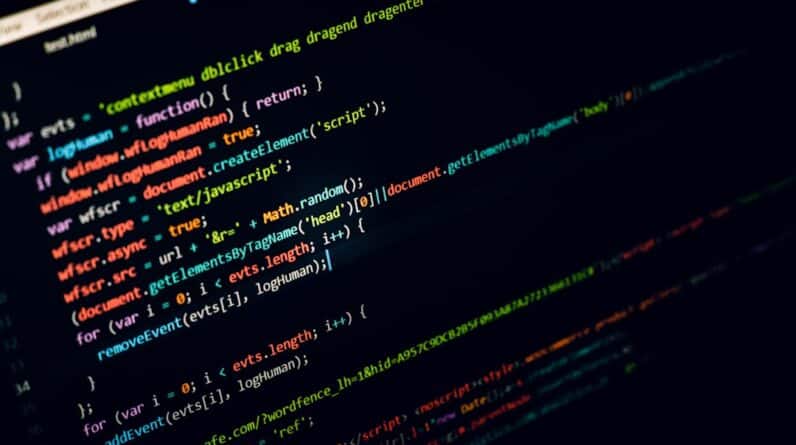As you delve into the world of artificial intelligence, you may encounter the term “AI bias” frequently. This concept refers to the systematic and unfair discrimination that can arise in AI systems, often reflecting the prejudices present in the data used to train these algorithms. In an era where AI is increasingly integrated into various aspects of daily life—from hiring processes to law enforcement—understanding AI bias becomes crucial.
The implications of biased AI systems can be profound, affecting individuals and communities in ways that may not be immediately apparent. The significance of addressing AI bias cannot be overstated. As you navigate through this complex landscape, you will discover that the consequences of bias in AI extend beyond mere technical inaccuracies; they can perpetuate social inequalities and reinforce existing stereotypes.
By examining the roots and ramifications of AI bias, you can better appreciate the importance of developing fair and equitable AI systems that serve all members of society.
Key Takeaways
- AI bias refers to the unfair and discriminatory outcomes produced by artificial intelligence systems.
- Bias in AI can be caused by various factors including biased training data, algorithmic bias, and human influence.
- AI bias can have detrimental effects on society, including reinforcing stereotypes and perpetuating inequality.
- Addressing and mitigating AI bias requires a multi-faceted approach, including diverse and inclusive data sets, transparent algorithms, and ethical considerations.
- The future of AI and bias will depend on the ethical considerations and actions taken by developers, policymakers, and society as a whole.
Understanding Bias in AI
To grasp the concept of AI bias, it is essential to first understand what bias means in a broader context. Bias refers to a tendency to favor one group over another, often leading to unfair treatment or outcomes. In the realm of artificial intelligence, this bias can manifest in various forms, including algorithmic bias, data bias, and societal bias.
As you explore these different types, you will see how they intertwine and contribute to the overall challenge of creating unbiased AI systems. Algorithmic bias occurs when an AI system produces results that are systematically prejudiced due to flawed algorithms. This can happen when the algorithms are designed without considering the diverse needs and characteristics of the population they serve.
Data bias, on the other hand, arises from the datasets used to train AI models. If these datasets are unrepresentative or contain historical biases, the AI will likely perpetuate those biases in its outputs. Lastly, societal bias reflects the broader cultural and social prejudices that can seep into AI systems through both data and algorithm design.
Understanding these nuances is vital for anyone looking to engage with AI responsibly.
Factors Contributing to AI Bias
Several factors contribute to the emergence of bias in AI systems, and recognizing these elements is key to addressing the issue effectively. One primary factor is the quality and diversity of the data used for training AI models. If the data is skewed or lacks representation from various demographic groups, the resulting AI system will likely reflect those imbalances.
For instance, if an AI model is trained predominantly on data from one demographic group, it may struggle to perform accurately for individuals outside that group. Another significant factor is the design choices made by developers during the creation of AI algorithms. These choices can inadvertently introduce biases based on assumptions or stereotypes held by the developers themselves.
For example, if a team lacks diversity, their collective blind spots may lead to an AI system that fails to account for the needs of underrepresented populations. Additionally, feedback loops can exacerbate existing biases; as biased systems are deployed and used, they can reinforce and amplify those biases over time, creating a cycle that is difficult to break.
Impact of AI Bias on Society
The impact of AI bias on society is far-reaching and multifaceted. As you consider its implications, you may realize that biased AI systems can lead to significant disparities in various sectors, including healthcare, criminal justice, and employment. For instance, in healthcare, biased algorithms may result in misdiagnoses or unequal access to treatment for certain demographic groups, ultimately affecting health outcomes.
In criminal justice, biased predictive policing tools can disproportionately target marginalized communities, perpetuating cycles of discrimination and mistrust. Moreover, the societal consequences of AI bias extend beyond individual experiences; they can shape public perceptions and reinforce systemic inequalities. When biased AI systems are widely adopted, they can legitimize harmful stereotypes and contribute to a culture of discrimination.
As you reflect on these impacts, it becomes clear that addressing AI bias is not just a technical challenge but a moral imperative that requires collective action from developers, policymakers, and society at large.
Addressing and Mitigating AI Bias
To effectively address and mitigate AI bias, a multifaceted approach is necessary. One crucial step is improving data collection practices to ensure that datasets are representative of diverse populations. This involves actively seeking out underrepresented groups and incorporating their perspectives into the data-gathering process.
By doing so, you can help create more equitable training datasets that enable AI systems to perform fairly across different demographics. In addition to enhancing data practices, fostering diversity within development teams is essential for reducing bias in AI systems. When teams comprise individuals from various backgrounds and experiences, they are more likely to identify potential biases and design solutions that consider a broader range of perspectives.
Furthermore, implementing rigorous testing and evaluation processes can help identify biases before deployment. By continuously monitoring AI systems for biased outcomes and making necessary adjustments, you can contribute to creating more just and equitable technologies.
Case Studies of AI Bias
Examining real-world case studies of AI bias can provide valuable insights into how these issues manifest in practice. One notable example is the use of facial recognition technology by law enforcement agencies. Studies have shown that many facial recognition systems exhibit higher error rates for individuals with darker skin tones compared to those with lighter skin tones.
This disparity has led to wrongful arrests and heightened scrutiny of marginalized communities, raising serious ethical concerns about the deployment of such technologies. Another case study involves hiring algorithms used by companies to screen job applicants. In some instances, these algorithms have been found to favor candidates based on gender or ethnicity due to biases present in historical hiring data.
As a result, qualified individuals from underrepresented groups may be overlooked for opportunities simply because the algorithm reflects past discriminatory practices. These examples underscore the urgent need for vigilance and accountability in developing and deploying AI systems.
Ethical Considerations in AI Development
As you engage with the topic of AI bias, it is essential to consider the ethical implications surrounding its development and deployment. The responsibility lies not only with developers but also with organizations and society as a whole to ensure that AI technologies are designed with fairness and equity in mind. Ethical considerations should guide every stage of the AI lifecycle—from data collection and algorithm design to deployment and monitoring.
Transparency is a critical ethical principle in addressing AI bias. Stakeholders should have access to information about how algorithms are developed and how decisions are made within these systems. This transparency fosters accountability and allows for informed discussions about potential biases and their implications.
Additionally, ethical frameworks should be established to guide developers in making decisions that prioritize fairness over profit or efficiency. By embedding ethical considerations into the fabric of AI development, you can help create technologies that align with societal values.
The Future of AI and Bias
Looking ahead, the future of AI and bias presents both challenges and opportunities. As technology continues to evolve at a rapid pace, it is crucial for stakeholders to remain vigilant about potential biases that may arise in new applications of AI. The increasing reliance on machine learning models means that addressing bias will require ongoing efforts to refine data practices and algorithmic design continually.
However, there is also hope for progress in this area. As awareness of AI bias grows among developers, policymakers, and the public, there is a greater push for ethical standards and regulations governing AI technologies. Collaborative efforts between technologists, ethicists, and community representatives can lead to innovative solutions that prioritize fairness and inclusivity in AI development.
By actively engaging with these issues today, you can contribute to shaping a future where artificial intelligence serves as a tool for empowerment rather than discrimination. In conclusion, understanding and addressing AI bias is essential for creating equitable technologies that benefit all members of society. By recognizing the factors contributing to bias, examining its societal impacts, and advocating for ethical practices in development, you can play a vital role in fostering a more just future for artificial intelligence.
Can AI be biased? This is a question that has been explored in depth in a related article titled How Close Are We to True AI? This article delves into the complexities of developing artificial intelligence that is truly unbiased and ethical. It discusses the challenges and advancements in the field of AI that are bringing us closer to achieving this goal. Additionally, other articles such as AI in Cybersecurity: Battling Threats with Intelligent Defense and AI and Virtual Reality: Creating Immersive AI-Powered Experiences showcase the diverse applications of AI technology in various industries.
FAQs
What is AI bias?
AI bias refers to the unfair and discriminatory outcomes that can result from the use of artificial intelligence systems. This bias can occur when the data used to train AI models is unrepresentative or when the algorithms themselves contain inherent biases.
How does AI bias occur?
AI bias can occur in several ways. It can result from biased training data, where the data used to train AI models is not representative of the real world. Bias can also be introduced through the design of the algorithms themselves, as they may inadvertently encode and perpetuate existing societal biases.
What are the potential consequences of AI bias?
The potential consequences of AI bias are significant and can include perpetuating and exacerbating existing societal inequalities, reinforcing stereotypes, and leading to unfair treatment of individuals or groups. In some cases, AI bias can also result in legal and ethical implications for the organizations deploying biased AI systems.
Can AI bias be mitigated?
Efforts to mitigate AI bias include improving the diversity and representativeness of training data, developing algorithms that are more transparent and interpretable, and implementing fairness-aware machine learning techniques. Additionally, organizations can establish ethical guidelines and standards for the development and deployment of AI systems to minimize bias.






